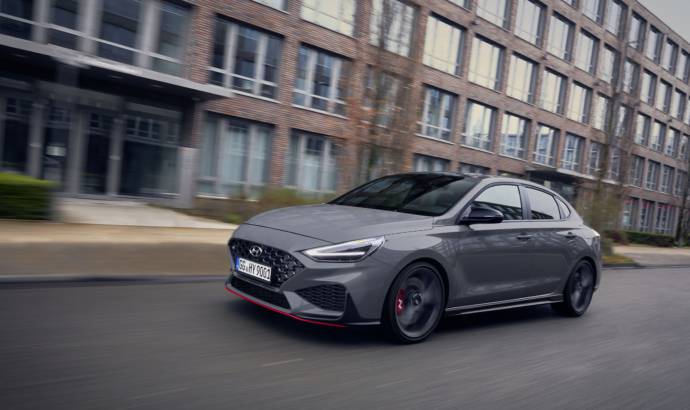Hyundai continues its journey in the hot-hatch segment with the introduction of a slightly revised i30. First released in 2018, i30 N was developed at the state of the art Namyang R&D facilities and further honed at both the Nürburgring racetrack and renowned driving roads across Europe.
The New i30 N has undergone a series of exterior design updates, developed with a focus on dynamic performance as well as an aesthetic refresh. At the front, a new wide centre grille has been optimised to allow efficient engine cooling and a redesigned front that significantly improves airflow and reduces turbulence into the wheel housing.
New i30 N hatchback versions feature an updated rear end design, while the rear of the New i30 N Fastback remains unchanged. New LED headlamps with V-shaped daytime running lights (DRLs) complete the front end while the rear lamps have also been updated and feature a new LED signature.
With form following function, New i30 N features newly-developed 19-inch forged alloy wheels, designed for minimum unsprang mass and are 14.4 kg lighter than the current 19-inch cast alloy wheels. The lightweight, optimised, five-double-spoke wheels are finished with a dark satin grey matte finish, contrasting with the N-specific red brake callipers with N logo. Tyres continue to be high-performance Pirelli P-Zero tyres, with a specific HN compound developed especially for the i30 N.
Interior changes include the latest 10.25” navigation system, with multi speaker sound, voice control and the latest version of Bluelink, Hyundai’s state-of-the-art connected car service. This offers a range of new benefits and services for Hyundai customers including Connected Routing, last mile navigation, live parking information, and user profile feature to customise audio settings to individual drivers. The 10.25 inch screen is also used to display the Performance Driving Data System, which monitors and helps to improve the driver’s track skills, with updated graphics for even more ease of use. This feature saves and displays driving data, including information on PS, torque, turbo boost and also includes a lap and acceleration time.
New i30 N also introduces the option of N Light Sport Seats, a uniquely-designed pair of monoform high-performance sport seats that are 2.2 kg lighter than the standard seats, with pronounced bolsters designed to provide optimal lateral support. N Light Sport Seats are made of premium leather and Alcantara materials and come with Performance Blue stitching and an illuminated N logo on an integrated headrest. The New i30N interior remains focused on connecting the driver with the car, with features such as the signature analogue instrument cluster with its active variable LED red zone and the shift timing indicator. Metal pedals and Performance Blue stitching are joined by new seatbelts with Performance Blue accents.
As well as design and interior updates, New i30 N has also received a number of mechanical changes. Power from the 2.0-litre turbocharged GDi engine is now increased to 280PS and 392 Nm of torque, an additional 5PS and 3 9Nm respectively. The engine has been developed to provide maximum performance in real life driving conditions, with maximum torque available between 1,950 and 4,600 RPM, with a 0-62 time reduced by 0.2 seconds to 5.9 and a top speed of 155mph.
The six-speed manual transmission is carried over from the previous model, including the praised e-LSD however New i30 N also introduces an eight-speed dual clutch transmission – the N DCT. N DCT is a wet type transmission, with oil used to cool the clutch components, creating less friction and allowing a higher amount of torque to be transferred through the gearbox.





